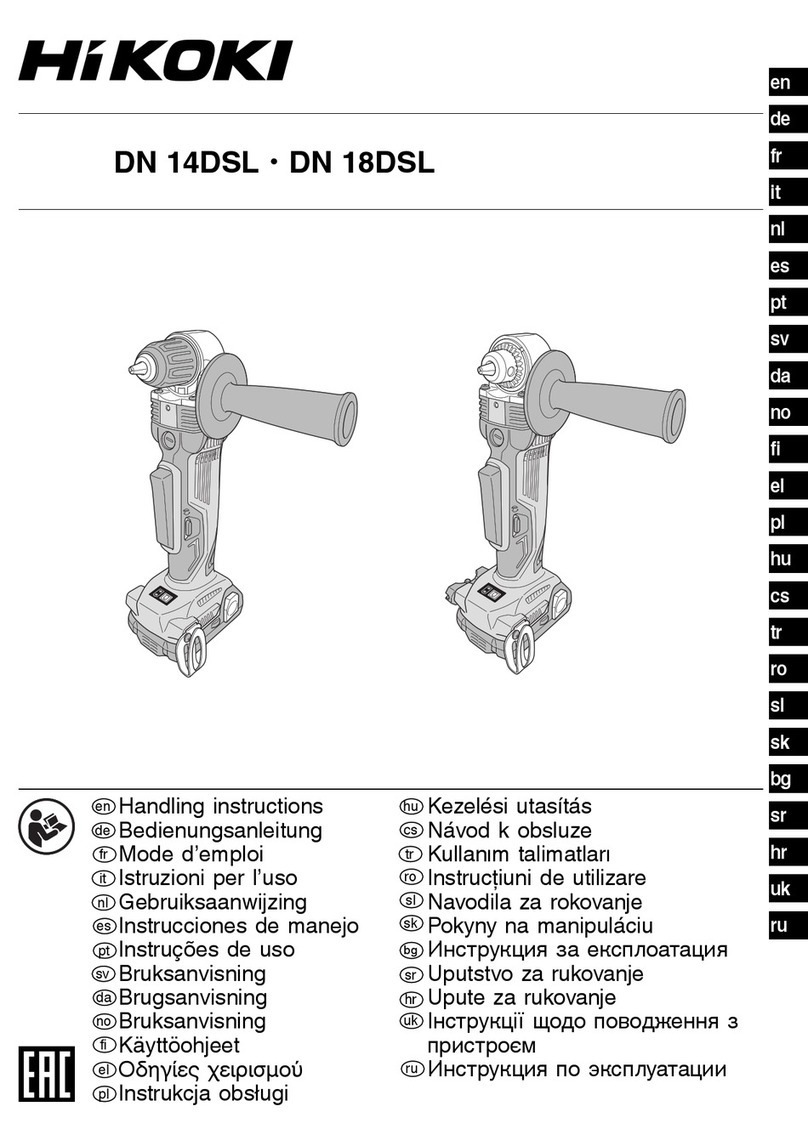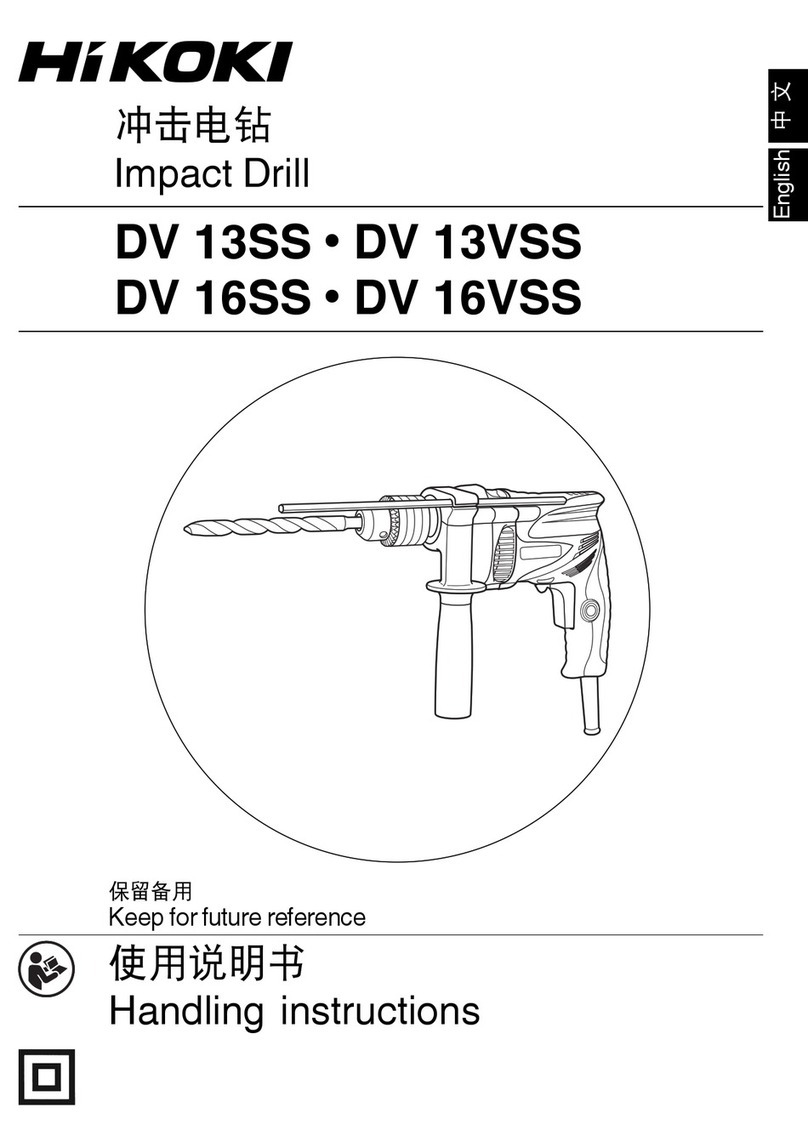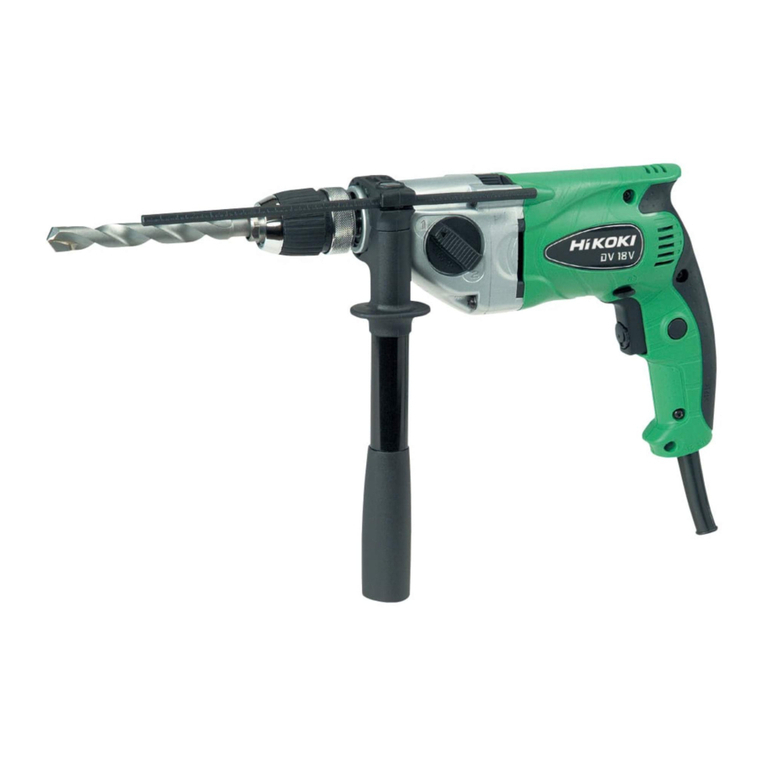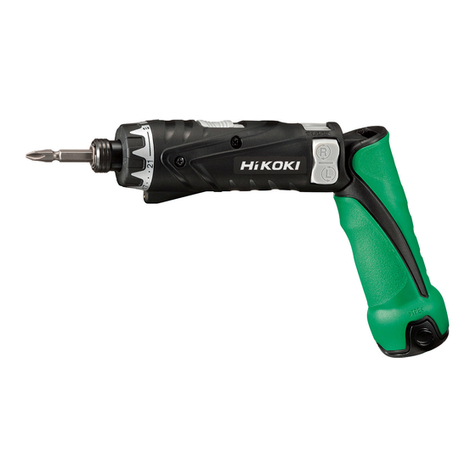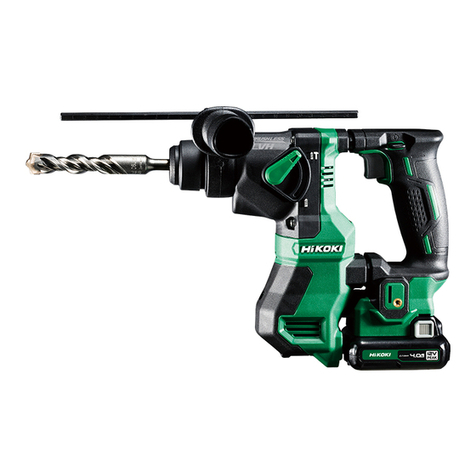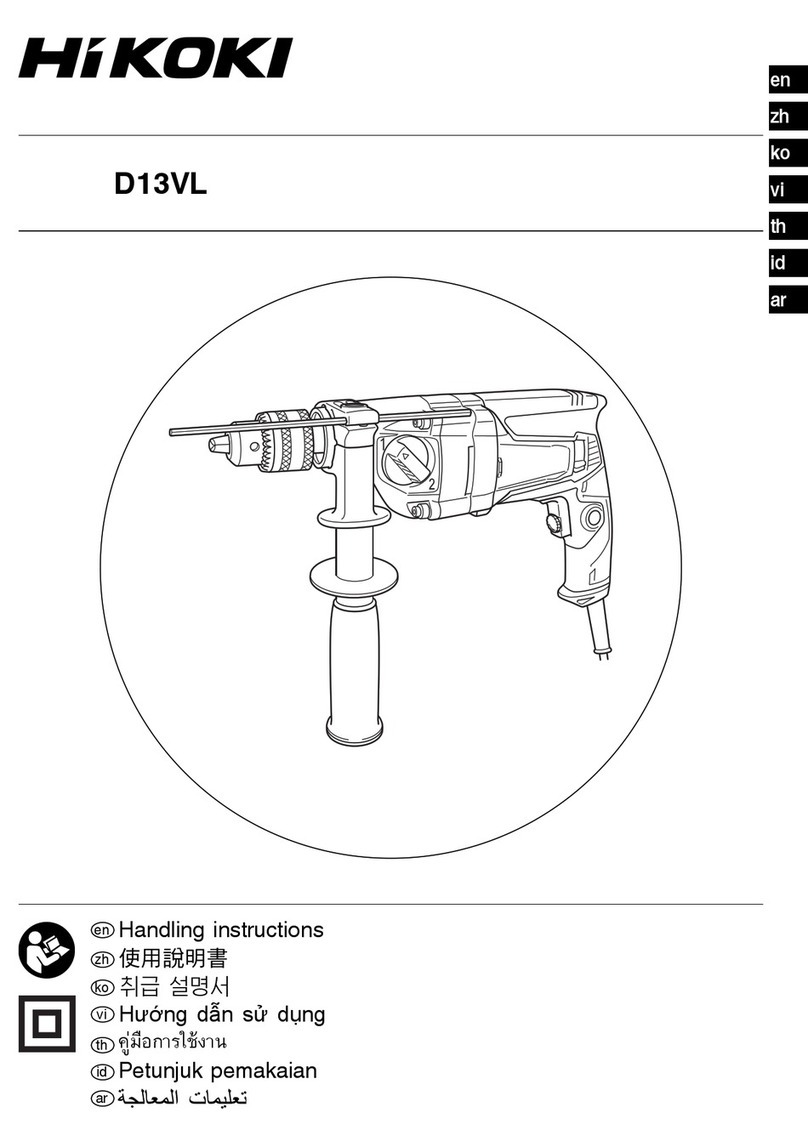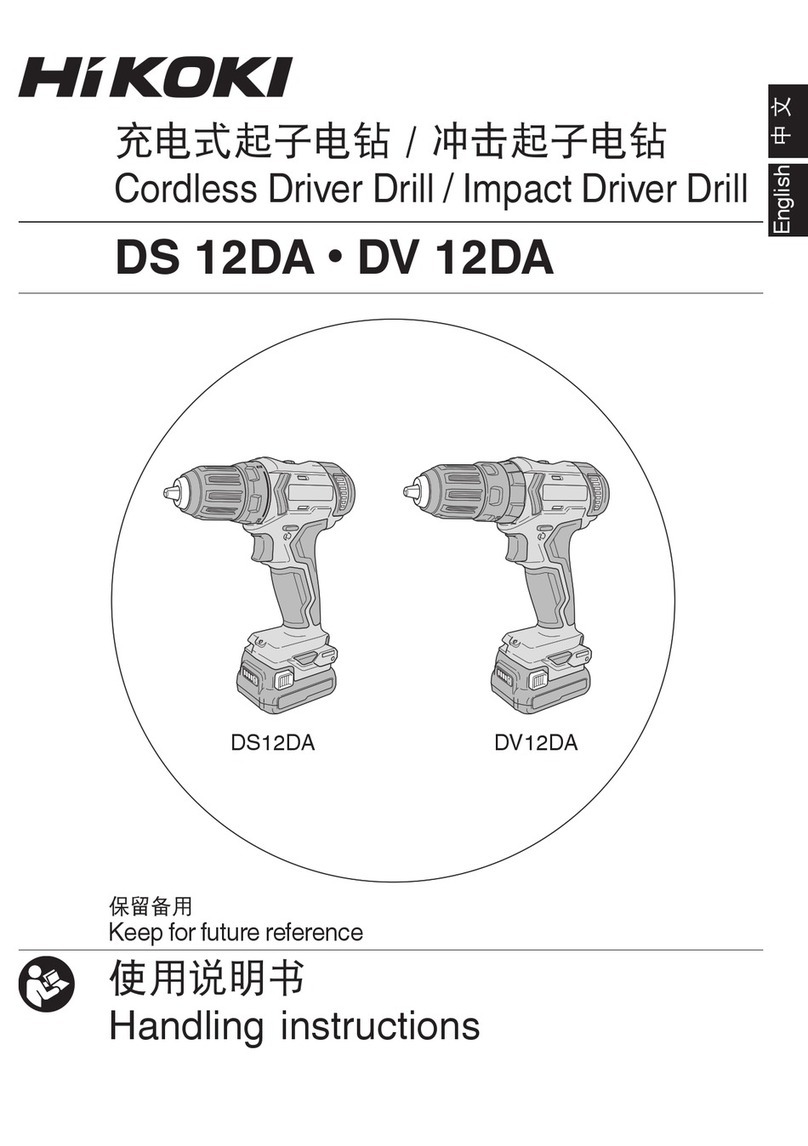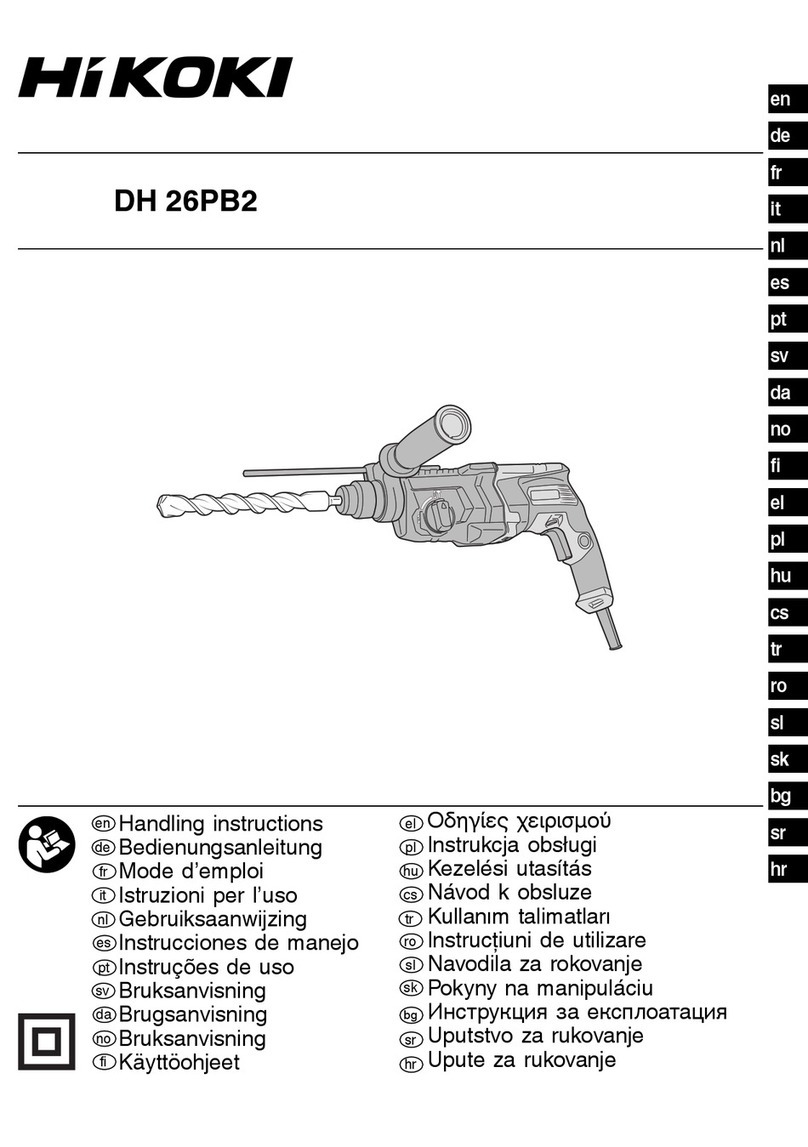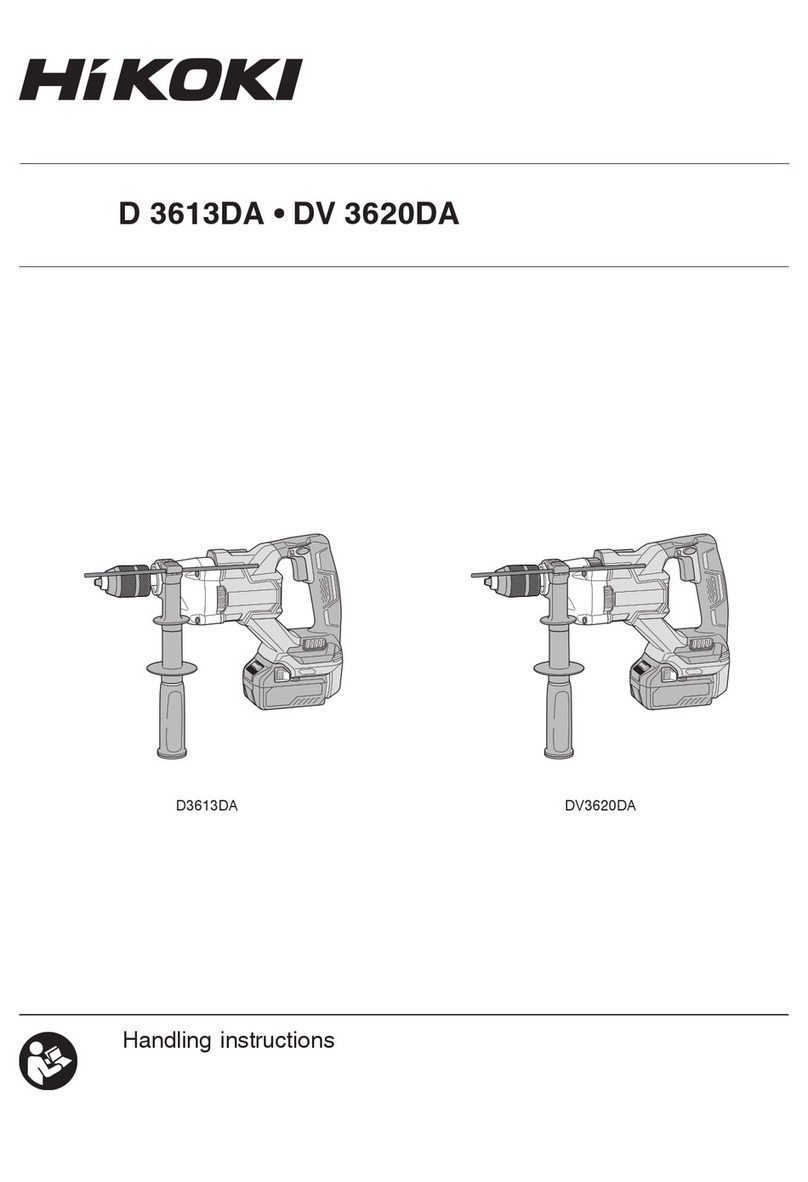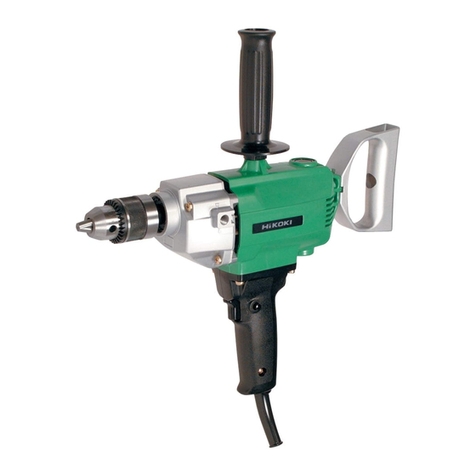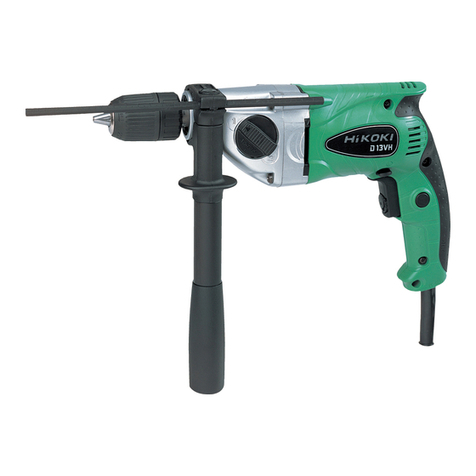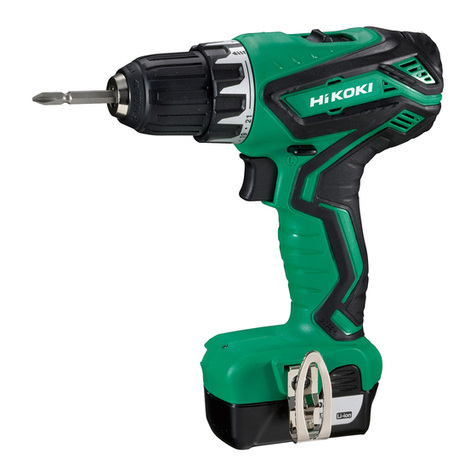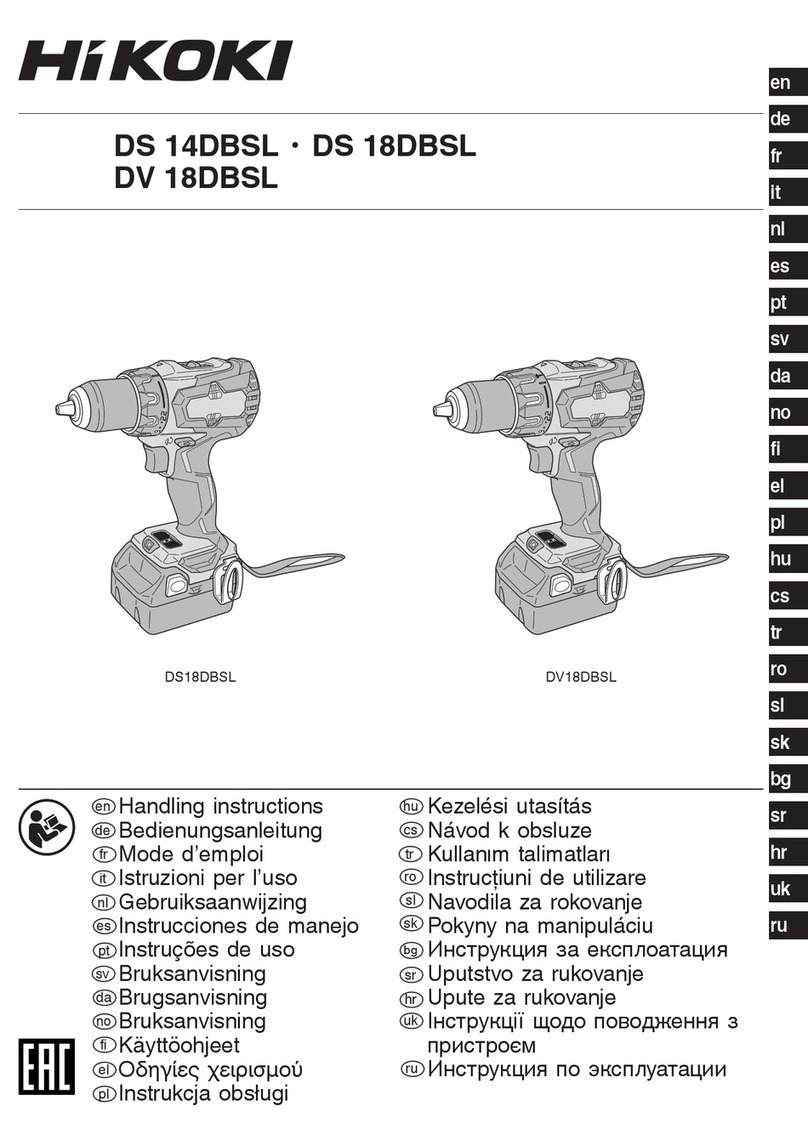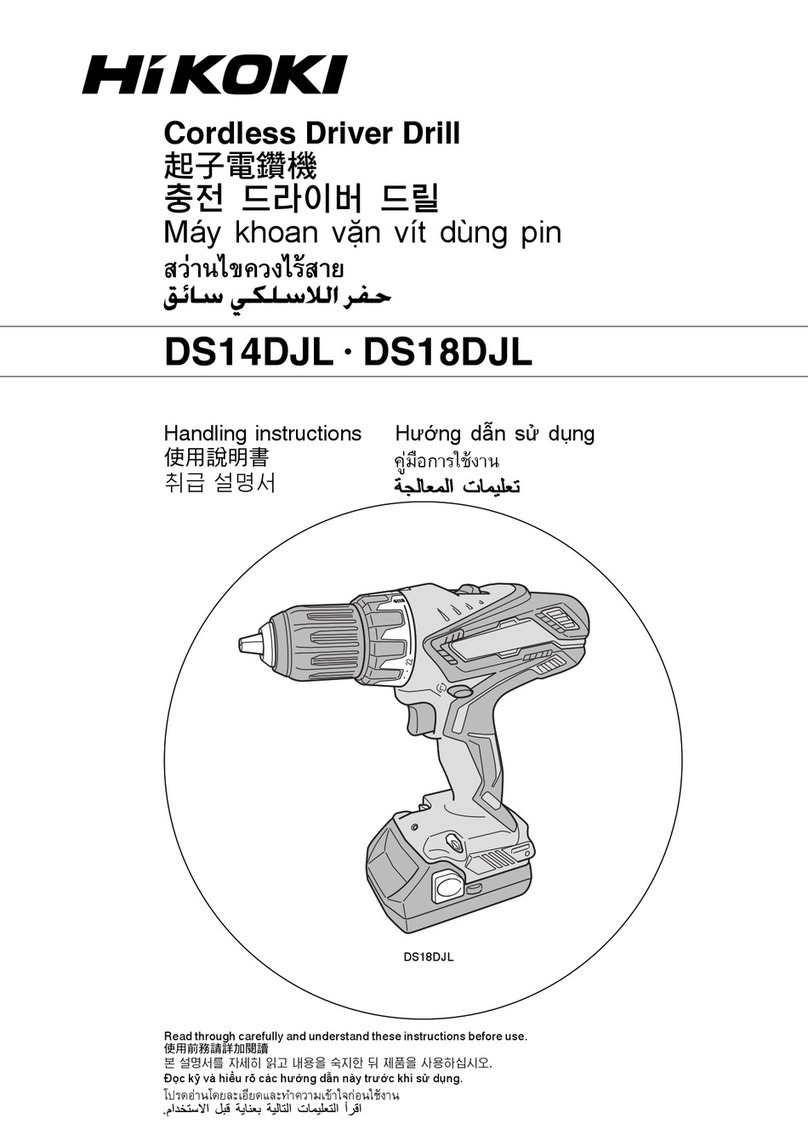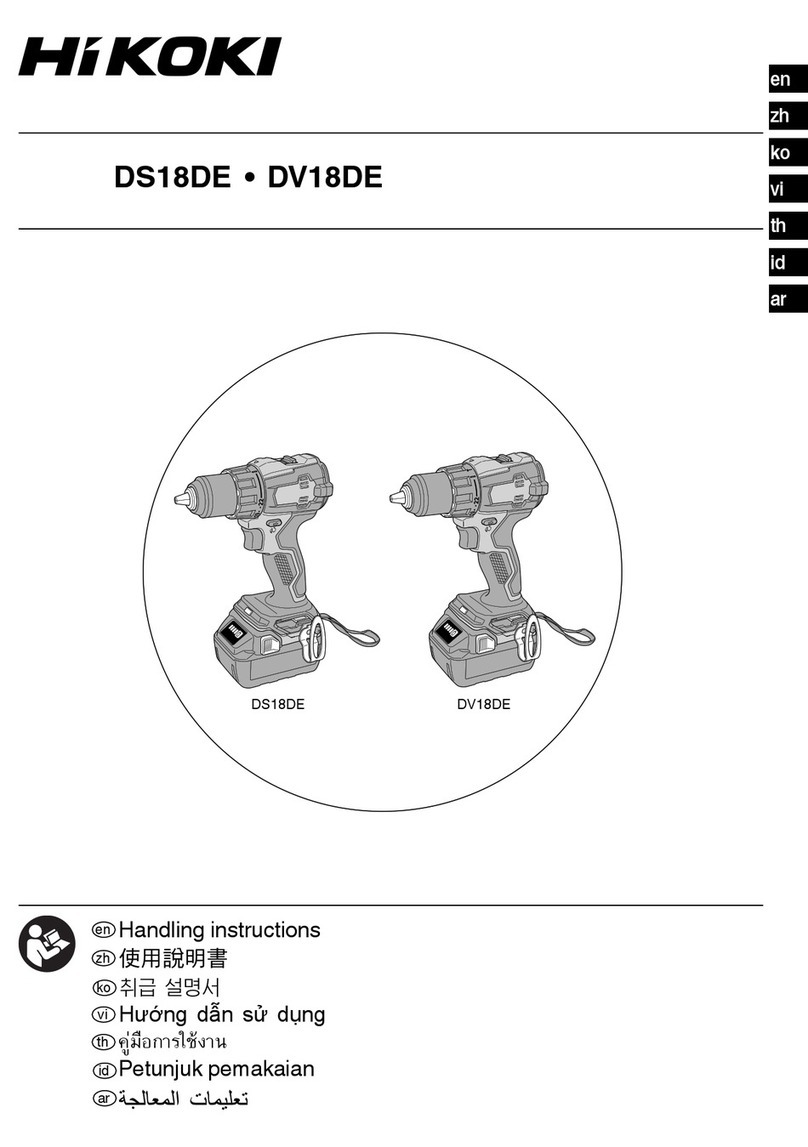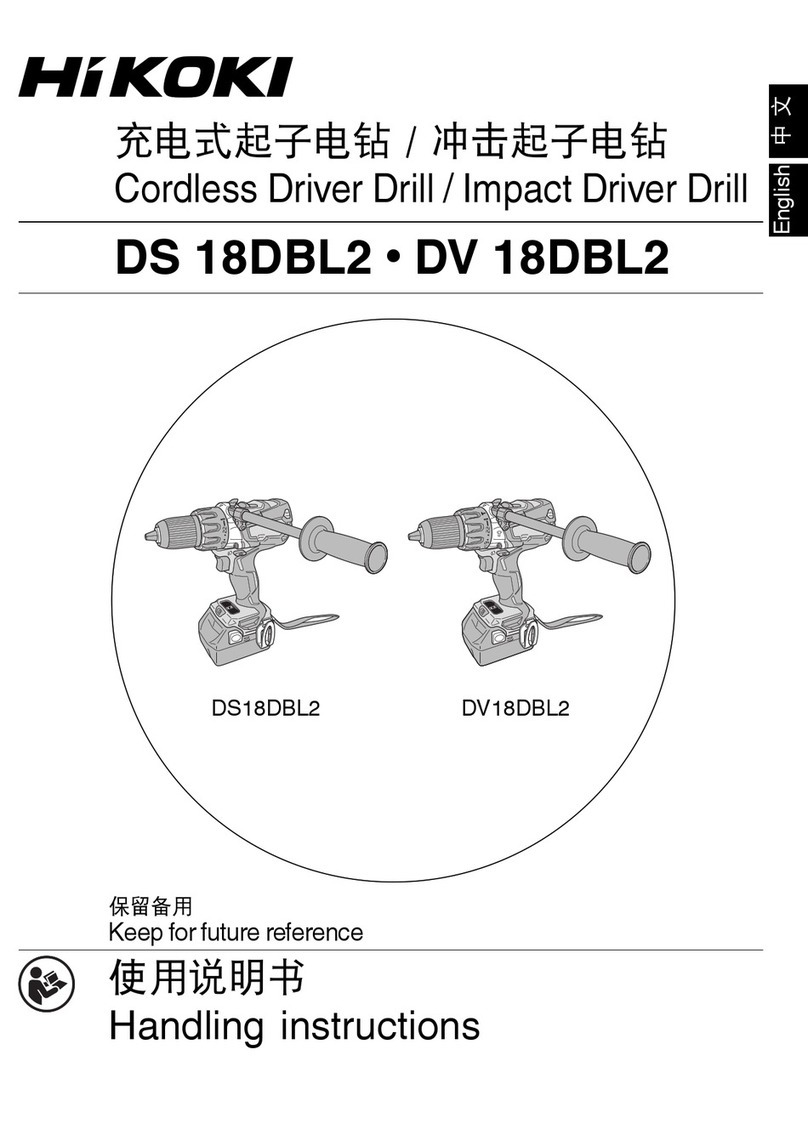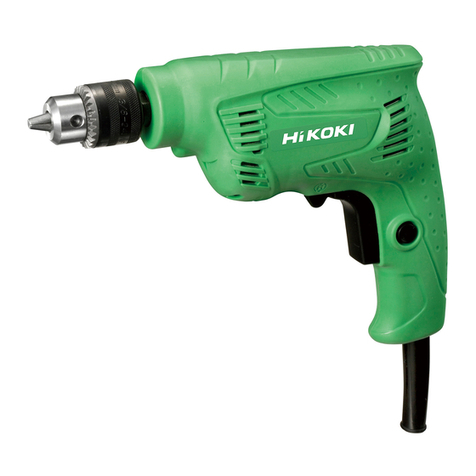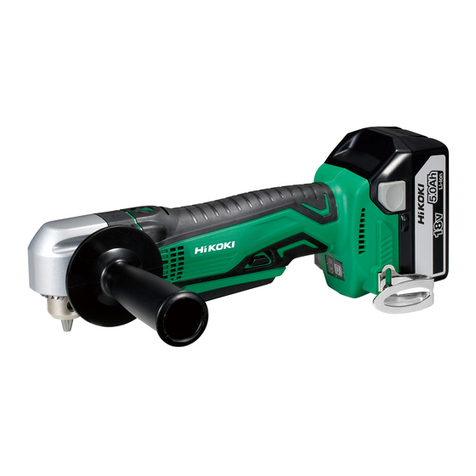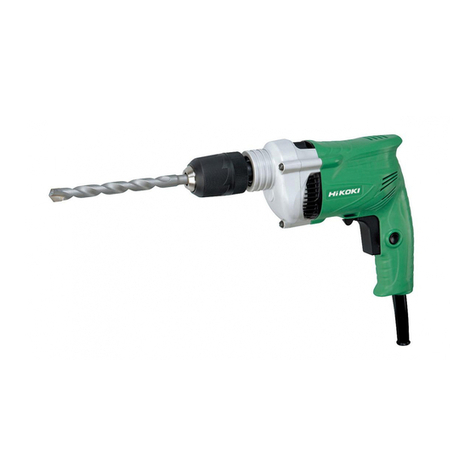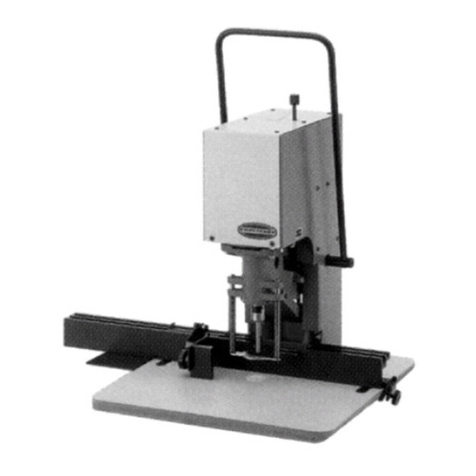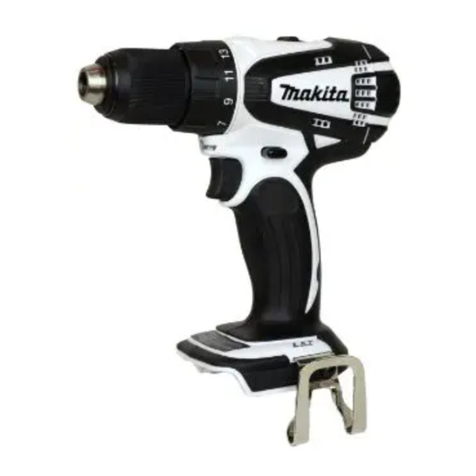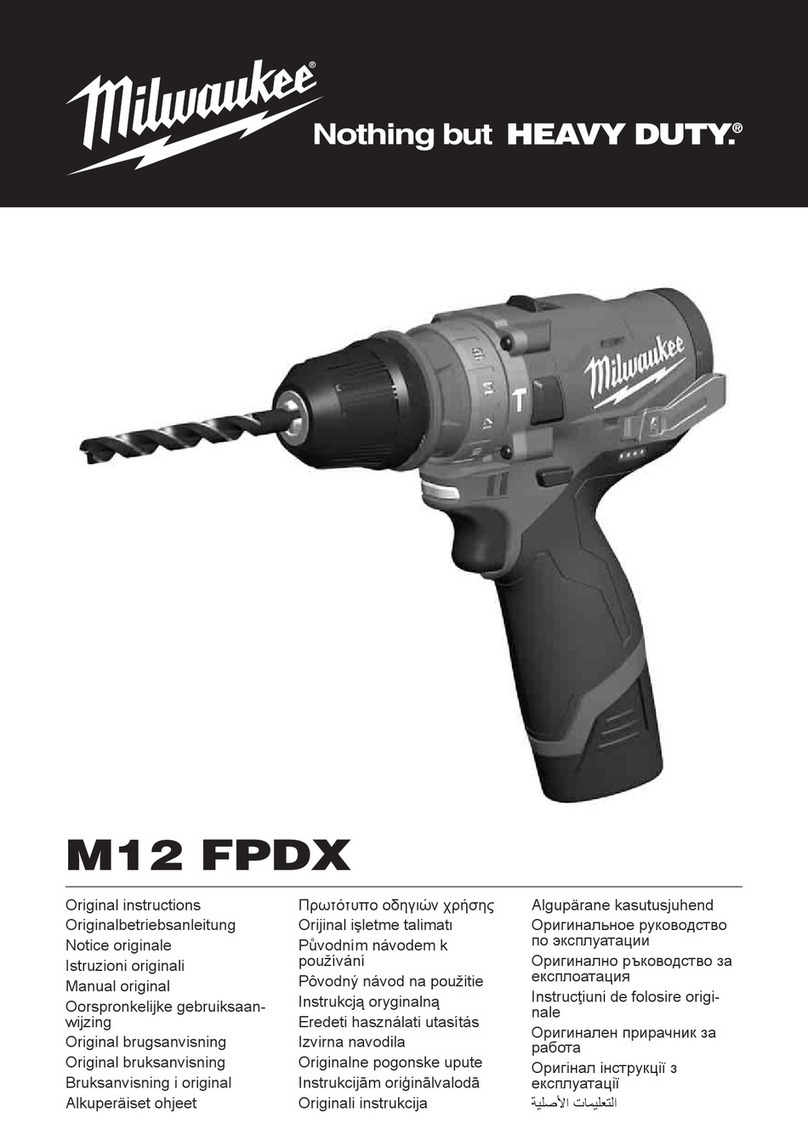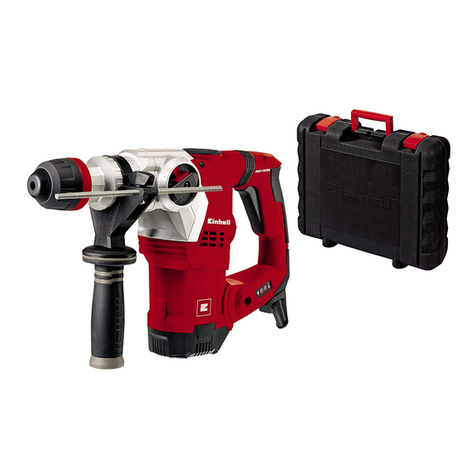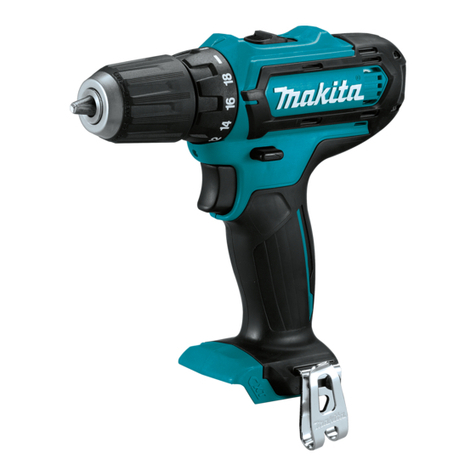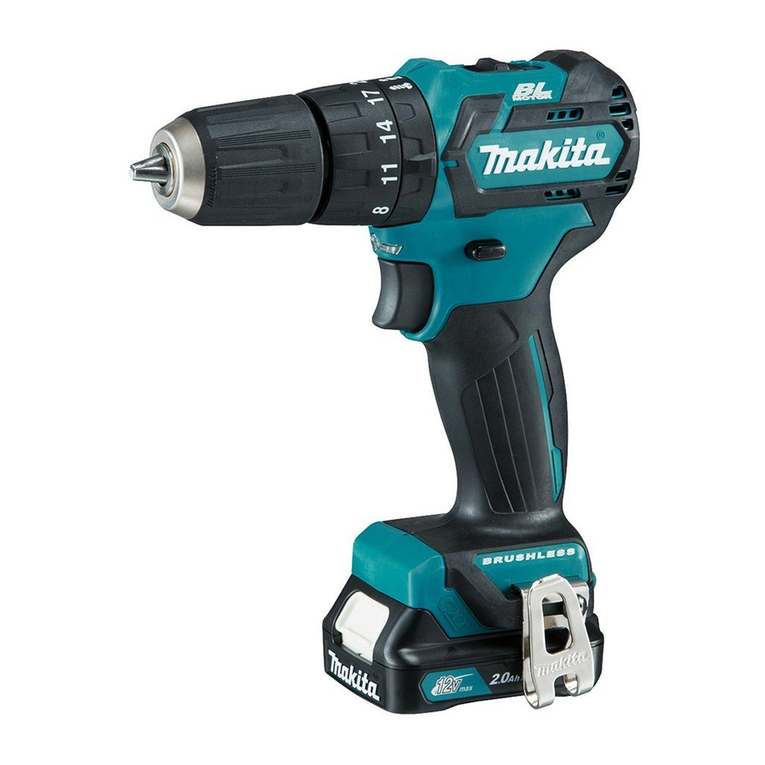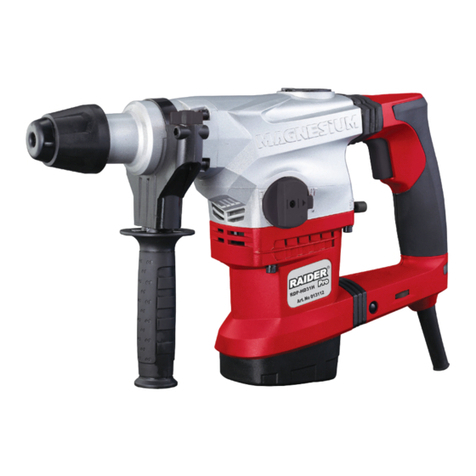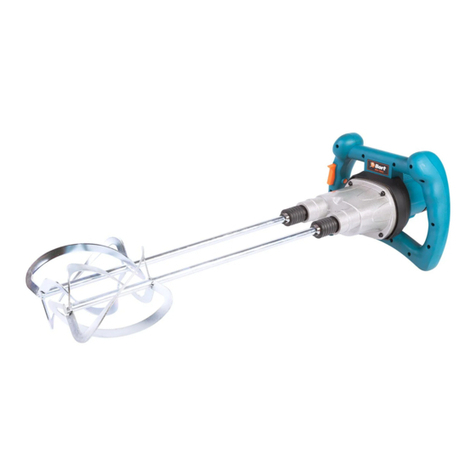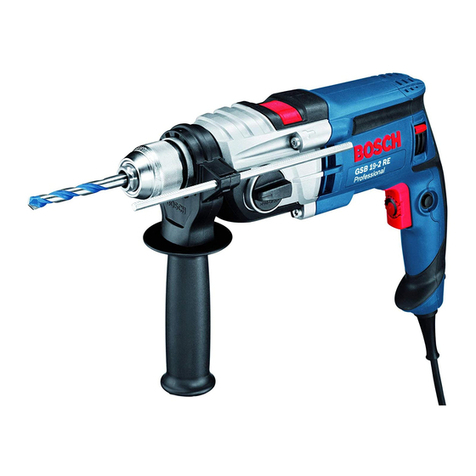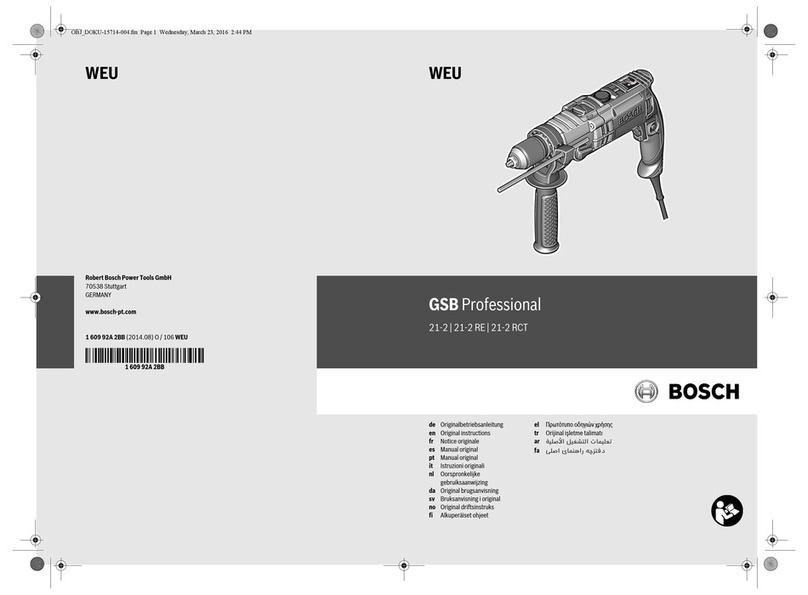
9
English
14. Do not touch metal parts of the tool body, bits, drills, or
swarf immediately after use, as these will be hot.
15. The motor rotation may be locked to cease while the unit
is used as drill. While operating the driver drill, take care
not to lock the motor.
16. The use of the battery in a cold condition (below 0 degree
Centigrade) can sometimes result in the weakened
tightening torque and reduced amount of work. This,
however, is a temporary phenomenon, and returns to
normal when the battery warms up.
17. Install securely the hook. Unless the hook is securely
installed, it may cause an injury while using.
When electing to carry the tool hooked to your hip belt,
make sure to detach the tool bit and side handle. Failure
to do so may result in unexpected injury.
18. Do not look directly into the light. Such actions could
result in eye injury.
Wipe offany dirt or grime attached to the lens of the LED
light with a soft cloth, being careful not to scratch the
lens.
Scratches on the lens of the LED light can result in
decreased brightness.
19. When working at elevated locations, clear the area of
other people and aware of conditions below you.
20. Always charge the battery at a temperature of 0°C–40°C.
A temperature of less than 0°C will result in over charging
which is dangerous. The battery cannot be charged at a
temperature higher than 40°C.
The most suitable temperature for charging is that of
20°C–25°C.
21. Do not use the charger continuously.
When one charging is completed, leave the charger for
about 15 minutes before the next charging of battery.
22. Do not allow foreign matter to enter the hole for
connecting the rechargeable battery.
23. Never disassemble the rechargeable battery and
charger.
24. Never short-circuit the rechargeable battery.
Shortcircuiting the battery will cause a great electric
current and overheat. It results in burn or damage to the
battery.
25. Do not dispose of the battery in fire. If the battery is burnt,
it may explode.
26. Bring the battery to the shop from which it was purchased
as soon as the post-charging battery life becomes too
short for practical use. Do not dispose of the exhausted
battery.
27. Do not insert object into the air ventilation slots of the
charger. Inserting metal objects or inflammables into the
charger air ventilation slots will result in electrical shock
hazard or damaged charger.
28. When using this unit continuously, the unit may overheat,
leading to damage in the motor and switch. Therefore,
whenever the housing becomes hot, give the tool a
break for a while.
29. Make sure that the battery is installed firmly. If it is at all
loose it could come offand cause an accident.
30. Do not use the product if the tool or the battery terminals
(battery mount) are deformed.
Installing the battery could cause a short circuit that
could result in smoke emission or ignition.
31. Keep the tool’s terminals (battery mount) free of swarf
and dust.
○Prior to use, make sure that swarf and dust have not
collected in the area of the terminals.
○During use, try to avoid swarf or dust on the tool from
falling on the battery.
○When suspending operation or after use, do not leave
the tool in an area where it may be exposed to falling
swarf or dust.
Doing so could cause a short circuit that could result in
smoke emission or ignition.
32. Always use the tool and battery at temperatures between
-5°C and 40°C.
CAUTION ON LITHIUM-ION BATTERY
To extend the lifetime, the lithium-ion battery equips with the
protection function to stop the output.
In the cases of 1 to 3 described below, when using this
product, even if you are pulling the switch, the motor may stop.
This is not the trouble but the result of protection function.
1. When the battery power remaining runs out, the motor
stops.
In such a case, charge it up immediately.
2. If the tool is overloaded, the motor may stop. In this
case, release the switch of tool and eliminate causes of
overloading. After that, you can use it again.
3. If the battery is overheated under overload work, the
battery power may stop.
In this case, stop using the battery and let the battery
cool. After that, you can use it again.
Furthermore, please heed the following warning and caution.
WARNING
In order to prevent any battery leakage, heat generation,
smoke emission, explosion and ignition beforehand, please
be sure to heed the following precautions.
1. Make sure that swarf and dust do not collect on the
battery.
○During work make sure that swarf and dust do not fall on
the battery.
○Make sure that any swarf and dust falling on the power
tool during work do not collect on the battery.
○Do not store an unused battery in a location exposed to
swarf and dust.
○Before storing a battery, remove any swarf and dust that
may adhere to it and do not store it together with metal
parts (screws, nails, etc.).
2. Do not pierce battery with a sharp object such as a
nail, strike with a hammer, step on, throw or subject the
battery to severe physical shock.
3. Do not use an apparently damaged or deformed battery.
4. Do not use the battery for a purpose other than those
specified.
5. If the battery charging fails to complete even when a
specified recharging time has elapsed, immediately stop
further recharging.
6. Do not put or subject the battery to high temperatures or
high pressure such as into a microwave oven, dryer, or
high pressure container.
7. Keep away from fire immediately when leakage or foul
odor are detected.
8. Do not use in a location where strong static electricity
generates.
9. If there is battery leakage, foul odor, heat generated,
discolored or deformed, or in any way appears abnormal
during use, recharging or storage, immediately remove it
from the equipment or battery charger, and stop use.
10. Do not immerse the battery or allow any fluids to flow
inside. Conductive liquid ingress, such as water, can
cause damage resulting in fire or explosion. Store your
battery in a cool, dry place, away from combustible and
flammable items. Corrosive gas atmospheres must be
avoided.
CAUTION
1. If liquid leaking from the battery gets into your eyes,
do not rub your eyes and wash them well with fresh
clean water such as tap water and contact a doctor
immediately.
If left untreated, the liquid may cause eye-problems.
2. If liquid leaks onto your skin or clothes, wash well with
clean water such as tap water immediately.
There is a possibility that this can cause skin irritation.
0000BookDS18DCAsia.indb90000BookDS18DCAsia.indb9 2022/08/099:42:292022/08/099:42:29
